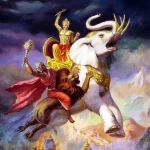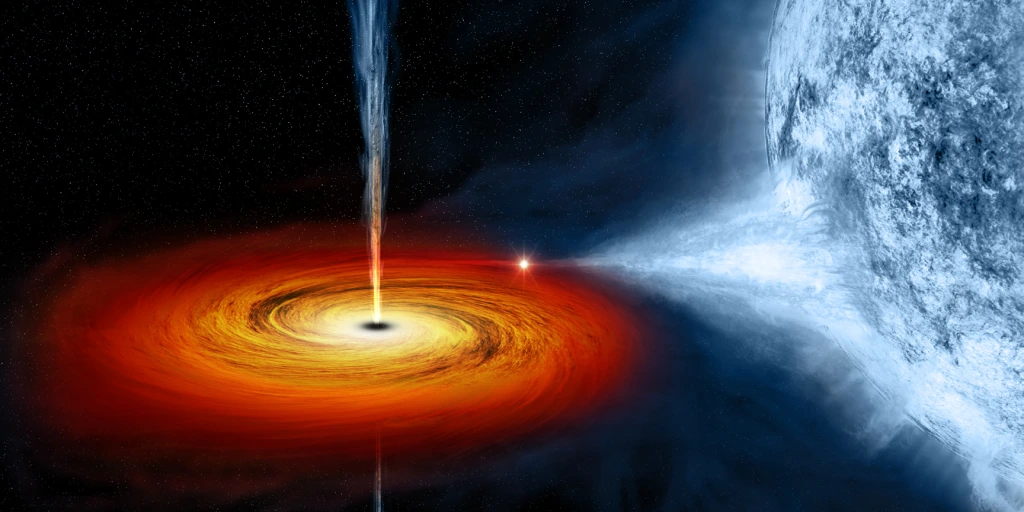The Unique Connection Between The Dark Matter and The Dark Energy
Hey there, fellow cosmic enthusiasts! Today, we’re diving into the mysterious realms of the universe to explore two invisible forces that dominate the cosmos—dark matter and dark energy. They might sound like they belong in a sci-fi movie, but they’re real, and they’re shaping the fate of our universe in ways we’re still trying to grasp. So, let’s unravel the secrets of these enigmatic entities in simple, easy-to-understand language!
The Cosmic Mystery Begins: Dark Matter
Okay, picture this—it’s like a cosmic game of hide-and-seek. Dark matter is there, but we can’t see it! It doesn’t give off light or energy like stars or planets, so it remains invisible to our telescopes and detectors. But hey, just because we can’t see it doesn’t mean it’s not essential!
What is Dark Matter?
Dark matter is a mysterious substance that makes up about 27% of the universe’s mass. That’s a massive chunk of the cosmic pie! We might not be able to see it, but we can feel its presence through its gravitational pull.
The Cosmic Ninja: Dark Matter’s Influence
Imagine you’re at a party, and someone’s playing a sneaky game, influencing everyone’s dance moves from the shadows—that’s dark matter for you! It behaves like a cosmic ninja, gently guiding the motions of galaxies and holding them together. Without it, galaxies would fly apart like confetti in a cosmic breeze.
Searching for Dark Matter
Scientists are like cosmic detectives on the hunt for dark matter. They use clever experiments and observations to catch this elusive substance red-handed. So far, they haven’t caught it directly, but they have some intriguing clues.
The Astonishing Acceleration: Dark Energy
Now, let’s talk about dark energy—a force that defies gravity and makes the universe do a cosmic sprint! It’s like a booster rocket, pushing galaxies away from each other at ever-increasing speeds.
What is Dark Energy?
Think of dark energy as the invisible hand that keeps the universe’s expansion going strong. It makes up about 68% of the universe, which means it’s even more influential than dark matter!
The Cosmic Sprint: Accelerating Universe
Imagine you throw a ball up in the air, and instead of slowing down, it speeds up as it rises—that’s what’s happening to our universe! Dark energy’s repulsive force is pushing galaxies away from each other at a faster and faster pace.
The Future of the Universe
With dark energy in play, the universe’s fate takes an interesting turn. The galaxies will eventually move apart so fast that they’ll disappear from each other’s sight! But don’t worry, this is happening over billions of years.
The Unique Connection Between The Dark Matter and The Dark Energy
Now, here’s the cosmic plot twist—dark matter and dark energy are entirely different entities, but they’re best buddies! While dark matter pulls galaxies together, dark energy pushes them apart. It’s like a cosmic tug-of-war, and the fate of the universe hangs in the balance!
Conclusion: Cosmic Enigmas Unveiled
So, there you have it—dark matter and dark energy, the invisible forces that rule the cosmos. They might be tricky to pin down, but they play crucial roles in shaping the universe we call home. As we continue to gaze at the stars and ponder the mysteries of the cosmos, these cosmic enigmas remind us that the universe is full of surprises and wonders, waiting to be discovered!
FAQs
- Is dark matter dangerous? No, dark matter doesn’t pose any threat to us. It doesn’t interact with regular matter, so it just peacefully influences the cosmos from the shadows.
- How did scientists discover dark energy? Dark energy’s existence came as a surprise! In the late 1990s, observations of distant supernovas revealed that the universe’s expansion was accelerating, leading to the discovery of dark energy.
- Can we use dark matter or dark energy as a power source? Unfortunately, no. Dark matter and dark energy are fascinating cosmic phenomena, but they don’t provide any energy we can use.
- What happens if dark energy keeps accelerating the universe’s expansion? If dark energy’s influence keeps growing, galaxies will eventually be so far apart that we won’t be able to see them anymore. But don’t worry, this will happen over an incredibly long time.
- Will we ever catch dark matter and dark energy? Scientists are determined to solve these cosmic mysteries! They continue to develop new experiments and observatories to catch a glimpse of dark matter and understand dark energy’s nature. The cosmic hunt is on!
- How do scientists know dark matter exists if it’s invisible? Scientists use the power of gravity to detect dark matter’s presence. They observe how galaxies move and interact with each other. The gravitational influence of dark matter can be seen through its impact on the visible matter in galaxies and galaxy clusters.
- Can dark matter and dark energy interact with each other? Currently, there’s no evidence to suggest that dark matter and dark energy interact directly. They seem to operate independently, with dark matter gravitationally pulling galaxies together and dark energy causing the universe to expand at an accelerated rate.
- Could dark energy cause the universe to collapse? The accelerating expansion caused by dark energy seems to suggest that the universe will continue to expand indefinitely. However, scientists cannot rule out other possibilities, and the ultimate fate of the universe remains a topic of ongoing research and speculation.
- Could dark matter be made of tiny black holes? It’s an intriguing idea! Some scientists have proposed the concept of primordial black holes, which could be very tiny and serve as a form of dark matter. However, definitive evidence for this idea is still being sought
- Is dark matter distributed evenly throughout the universe? Dark matter is distributed in vast, invisible halos around galaxies and galaxy clusters. It forms a “cosmic scaffolding” that guides the growth of large-scale cosmic structures.
- Could dark energy be a form of Einstein’s cosmological constant? Dark energy’s behavior is similar to the concept of Einstein’s cosmological constant, a term he added to his equations to maintain a static universe. However, the value of dark energy’s repulsive force remains a mystery and is still not fully understood.
- What other effects does dark energy have on the universe? Dark energy’s impact extends beyond just accelerating the universe’s expansion. It also affects the evolution of cosmic structures, such as galaxy clusters and superclusters, and influences the overall large-scale structure of the cosmos.
- Could dark energy ever change or weaken over time? While our current understanding of dark energy suggests that its repulsive force remains constant, there are theoretical possibilities that it might change or evolve over time. However, further observations and research are needed to explore these possibilities.
- How are scientists trying to detect dark matter directly? Scientists are conducting experiments using specialized detectors buried deep underground to shield from cosmic rays. These detectors aim to capture rare interactions between dark matter particles and ordinary matter, providing direct evidence of dark matter’s existence.
These questions and more continue to fuel the excitement and intrigue surrounding dark matter and dark energy. As our knowledge and technology evolve, we hope to unlock even more of the universe’s secrets and understand the profound influence of these invisible forces!









